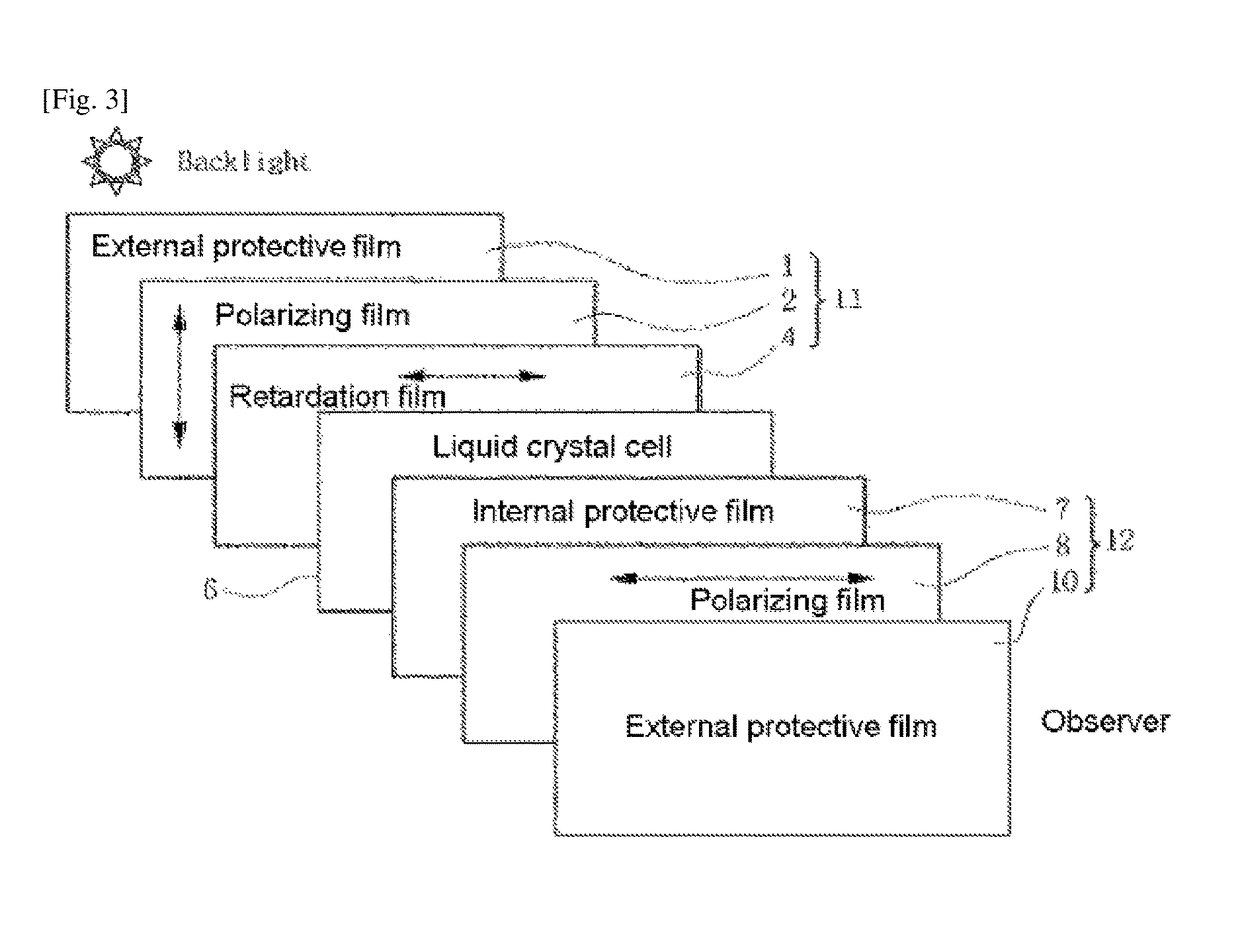Optical films, retardation films, and liquid crystal display comprising the same
a technology of retardation films and optical films, applied in the direction of instruments, polarising elements, other domestic objects, etc., can solve the problems of difficult control of refractive index, poor heat resistance and mechanical properties, and reduced performance of the resulting composition, etc., to achieve excellent transparency, heat resistance and mechanical strength, and high contrast characteristics. , the effect of excellent transparency
- Summary
- Abstract
- Description
- Claims
- Application Information
AI Technical Summary
Benefits of technology
Problems solved by technology
Method used
Image
Examples
example 1
[0120]2 g of the prepared macroinitiator I, 4 g of acrylonitrile (AN), and 16 g of styrene (SM) were added to a 100 mL flask having an agitating device at 90° C. to initiate the polymerization. After 18 hours, dilution was performed by using 100 mL of THF (tetrahydrofuran) to stop the reaction. The resulting solution was continuously agitated at normal temperature to be completely dissolved, slowly dropped onto an excessive amount of methanol, and dried to produce 13 g of white precipitate. The glass transition temperature which was measured by using a DSC (Differential Scanning Calorimeter) was 115° C., and the polystyrene reduced weight average molecular weight which was measured by using a GPC (Gel Permeation Chromatography) was 316,000.
example 2
[0121]2 g of the prepared macroinitiator II, 2 g of acrylonitrile (AN), and 18 g of styrene (SM) were added to a 100 mL flask having an agitating device at 90° C. to initiate the polymerization. After 18 hours, dilution was performed by using 100 mL of THF (tetrahydrofuran) to stop the reaction. The resulting solution was continuously agitated at normal temperature to be completely dissolved, slowly dropped onto an excessive amount of methanol, and dried to produce 13 g of white precipitate. The glass transition temperature which was measured by using a DSC (Differential Scanning Calorimeter) was 110° C., and the polystyrene reduced weight average molecular weight which was measured by using a GPC (Gel Permeation Chromatography) was 250,000.
example 3
[0122]2 g of the prepared macroinitiator I, and 20 g of styrene (SM) were added to a 100 mL flask having an agitating device at 90° C. to initiate the polymerization. After 18 hours, dilution was performed by using 100 mL of THF (tetrahydrofuran) to stop the reaction. The resulting solution was continuously agitated at normal temperature to be completely dissolved, slowly dropped onto an excessive amount of methanol, and dried to produce 13 g of white precipitate. The glass transition temperature which was measured by using a DSC (Differential Scanning Calorimeter) was 107° C., and the polystyrene reduced weight average molecular weight which was measured by using a GPC (Gel Permeation Chromatography) was 190,000.
PUM
| Property | Measurement | Unit |
|---|---|---|
| mol % | aaaaa | aaaaa |
| thickness retardation | aaaaa | aaaaa |
| thickness retardation | aaaaa | aaaaa |
Abstract
Description
Claims
Application Information
 Login to View More
Login to View More - R&D
- Intellectual Property
- Life Sciences
- Materials
- Tech Scout
- Unparalleled Data Quality
- Higher Quality Content
- 60% Fewer Hallucinations
Browse by: Latest US Patents, China's latest patents, Technical Efficacy Thesaurus, Application Domain, Technology Topic, Popular Technical Reports.
© 2025 PatSnap. All rights reserved.Legal|Privacy policy|Modern Slavery Act Transparency Statement|Sitemap|About US| Contact US: help@patsnap.com



